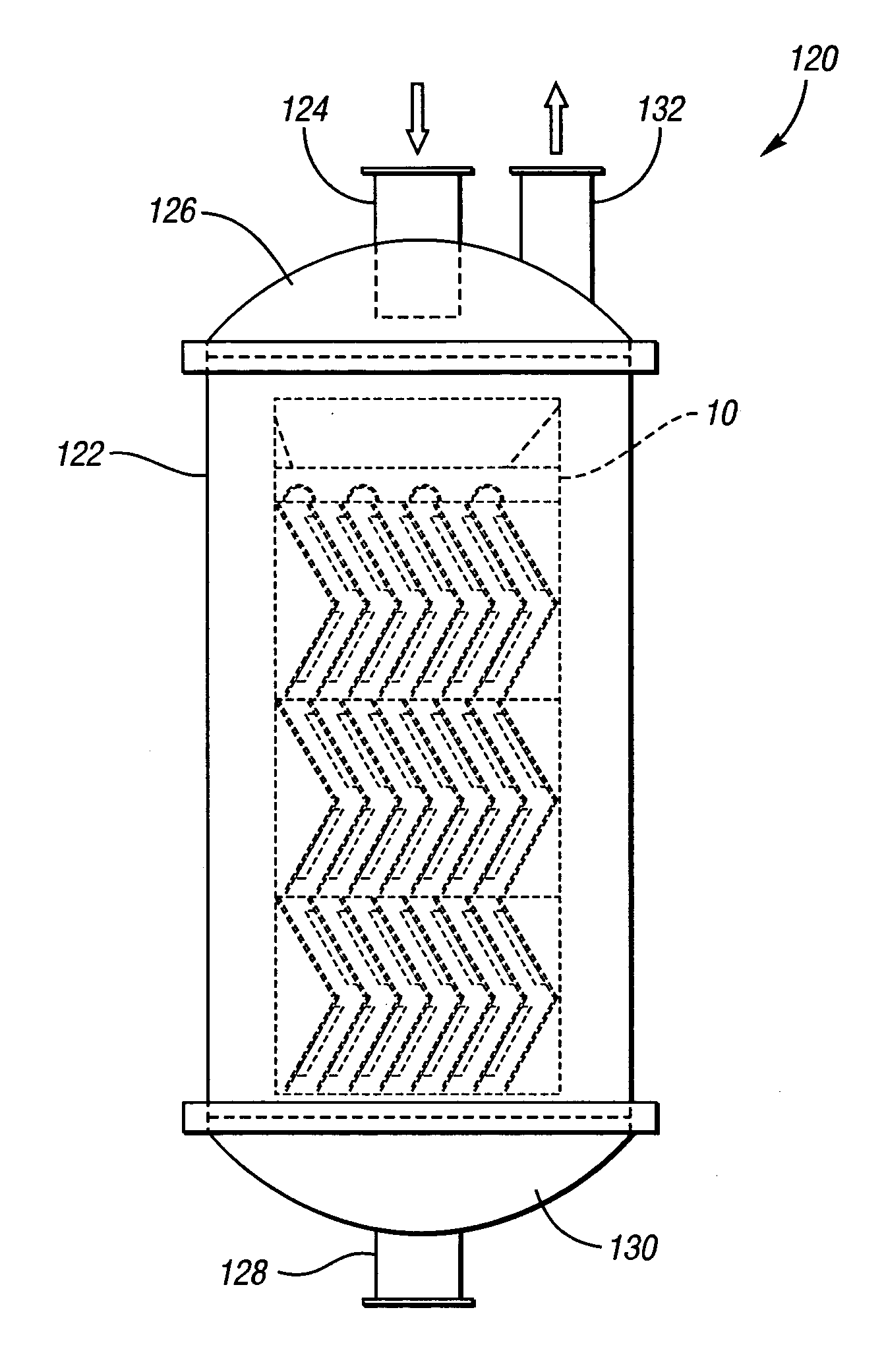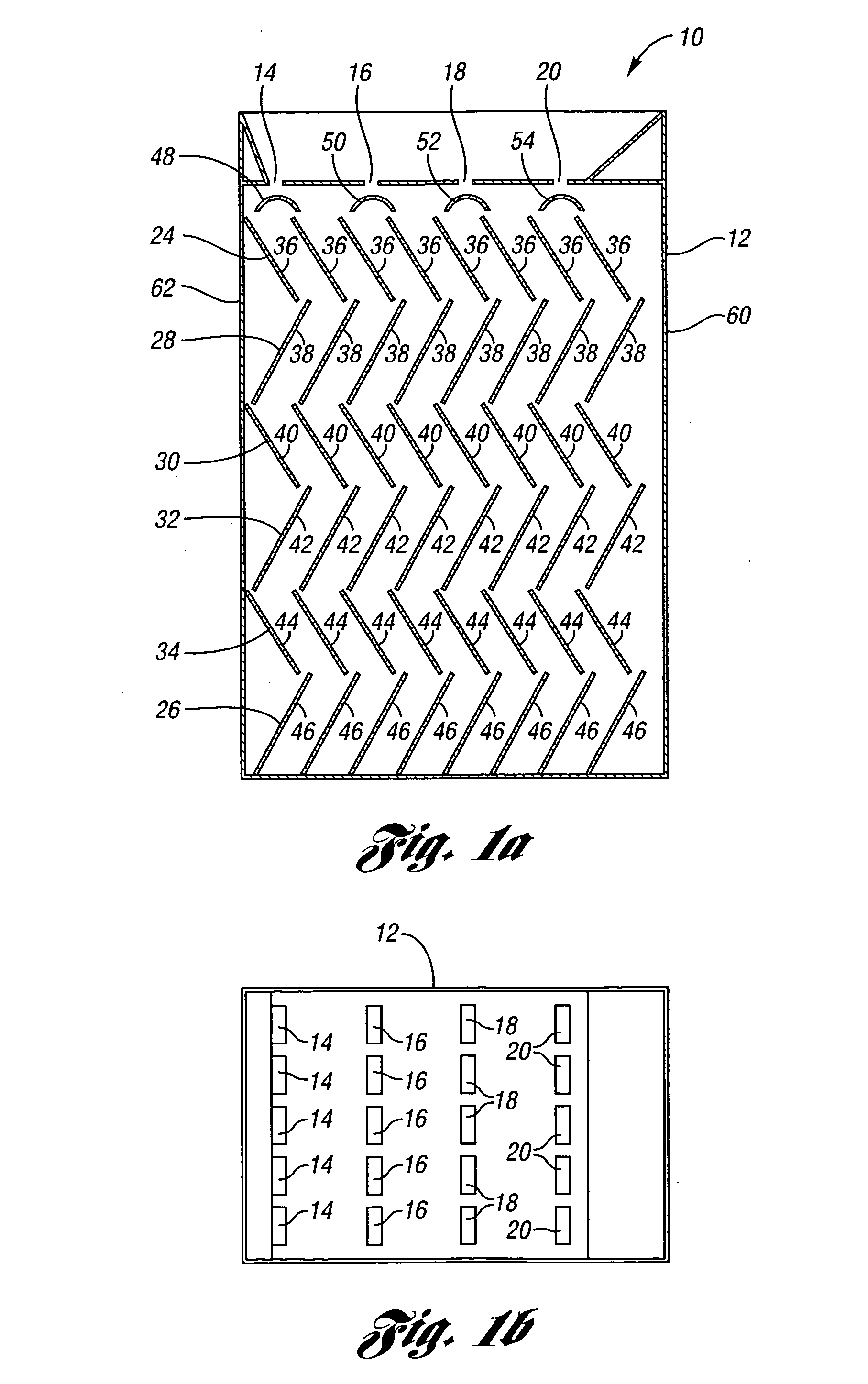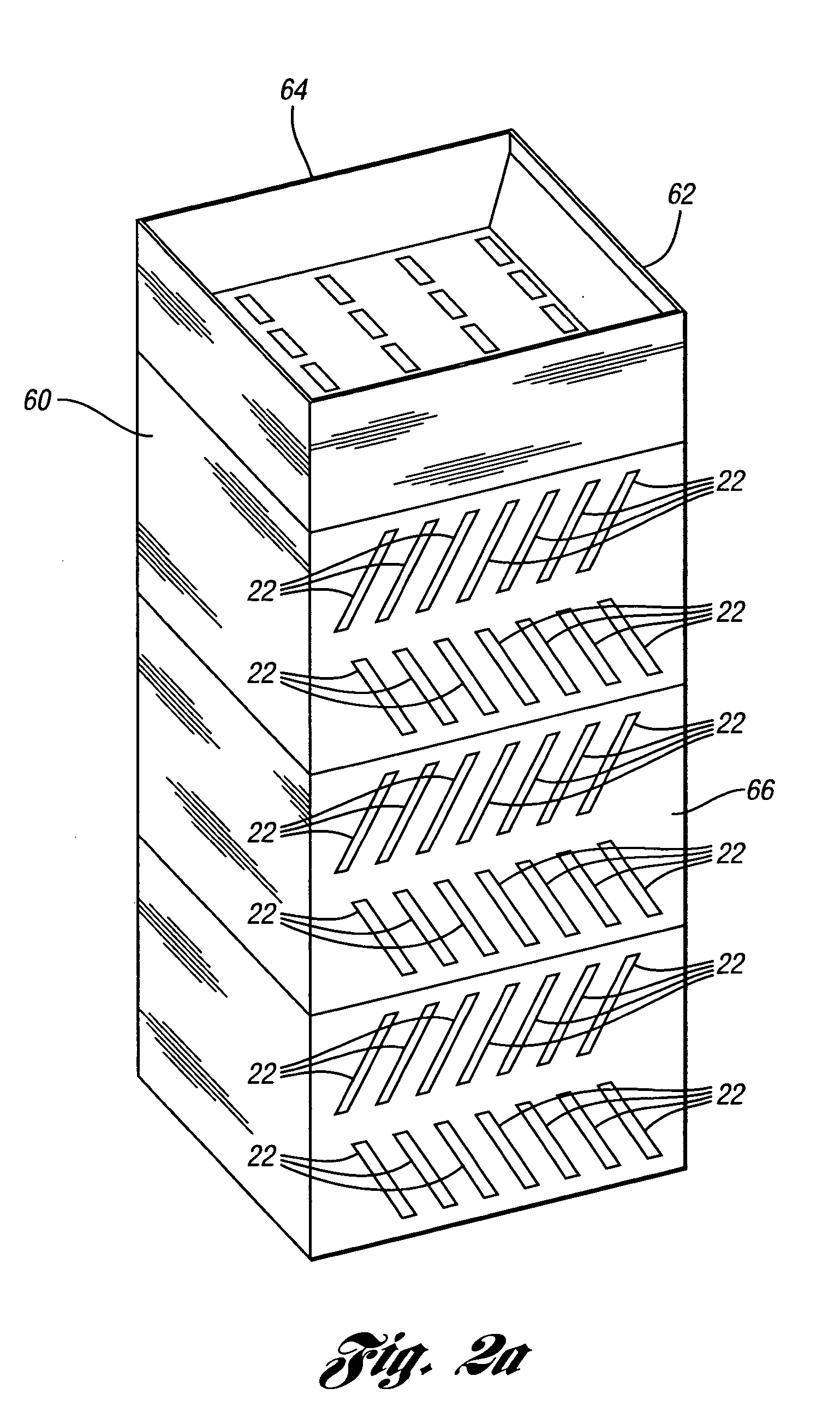Baffle assembly module for vertical staged polymerization reactors
a technology of polymerization reactor and baffle assembly, which is applied in the direction of liquid-gas reaction of thin-film type, chemical/physical/physicochemical processes, chemical apparatuses and processes, etc., can solve the problem of reducing the capacity of renewing the liquid-vapor surface, reducing the mass transfer efficiency of the stirred-tank reactor, and increasing the liquid residence time within the reactor and its exposure. , the effect of increasing the free surface area
- Summary
- Abstract
- Description
- Claims
- Application Information
AI Technical Summary
Benefits of technology
Problems solved by technology
Method used
Image
Examples
Embodiment Construction
)
[0037] Reference will now be made in detail to the presently preferred compositions or embodiments and methods of the invention, which constitute the best modes of practicing the invention presently known to the inventors.
[0038] In an embodiment of the present invention, an assembly adapted to be placed in a reactor for polymerizing a polymeric melt is provided. With reference to FIGS. 1a, 1b, 2a, and 2b, the baffle assembly module 10 consists of a stationary feed splitter and stationary baffles mounted in a support structure 12. The feed splitter and baffles are referred to as stationary because they do not have moving parts nor do they move during operation.
[0039] The baffle assembly module 10 includes a row of baffles 24 which is the highest vertically positioned row and another row of baffles 26 which is the lowest vertically positioned row. The baffle assembly module 10 will also optionally include one or more intermediately positioned rows 28, 30, 32, 34. Each row of the ve...
PUM
| Property | Measurement | Unit |
|---|---|---|
| Temperature | aaaaa | aaaaa |
| Temperature | aaaaa | aaaaa |
| Fraction | aaaaa | aaaaa |
Abstract
Description
Claims
Application Information
 Login to View More
Login to View More - R&D
- Intellectual Property
- Life Sciences
- Materials
- Tech Scout
- Unparalleled Data Quality
- Higher Quality Content
- 60% Fewer Hallucinations
Browse by: Latest US Patents, China's latest patents, Technical Efficacy Thesaurus, Application Domain, Technology Topic, Popular Technical Reports.
© 2025 PatSnap. All rights reserved.Legal|Privacy policy|Modern Slavery Act Transparency Statement|Sitemap|About US| Contact US: help@patsnap.com



